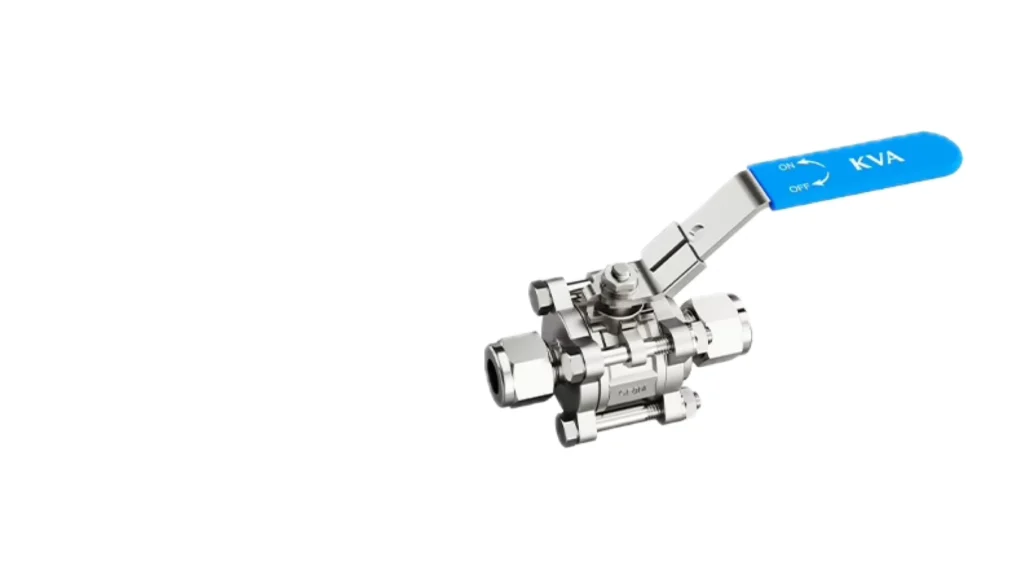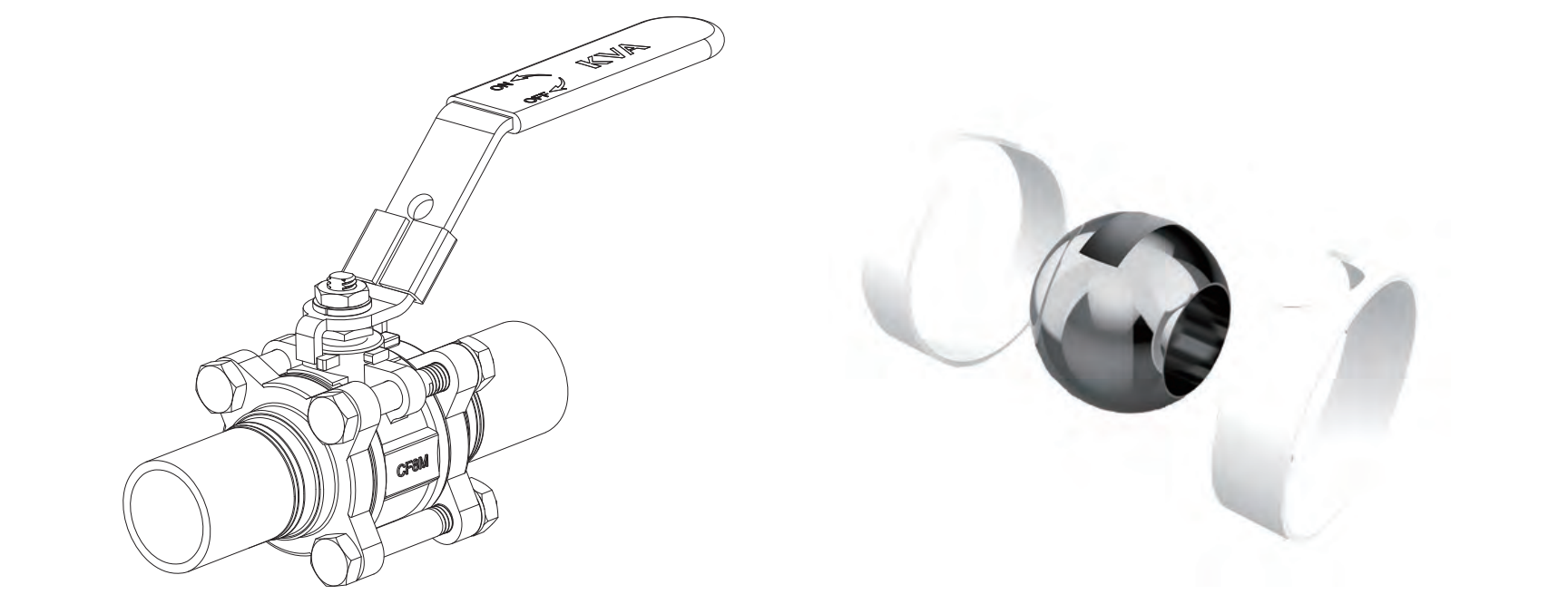
Introduction
In fluid systems, Ball Valves are popular due to their excellent performance and wide applicability. This article will explore the reasons for the popularity of ball valves, compare them with other types of valves, and analyze their characteristics, functions, effects, and areas of use.
Excellent Characteristics
1- Internal Structure of Ball Valve
The design of ball valves is relatively simple, consisting of the valve body, valve ball, valve stem, Seal Ring and Bracket. This straightforward structure makes ball valves more convenient to manufacture and maintain, thereby reducing operational and maintenance costs.
–Valve Body: Material: Typically made from cast steel, stainless steel, plastic, and other materials, offering good corrosion resistance and strength.
Function: Provides the outer shell of the valve and supports the internal components.
–Valve Ball: Shape: Spherical, usually made from metal or plastic.
Function: Controls the flow of fluid, with a typical rotation angle of 90 degrees.
–Valve Stem: Connection: Connects the valve ball to the external operating device.
Function: Opens or closes the valve ball by rotating the valve stem.
–Seal Ring: Material: Commonly made from PTFE, rubber, etc.
Function: Ensures the valve’s tightness when closed, preventing fluid leakage.
–Bracket: Function: Supports the valve ball and valve stem, ensuring stability and smooth operation.
2- Features
–Quick Opening and Closing: The opening and closing action of the ball valve typically requires only a 90-degree rotation. The valve can be quickly opened and closed by rotating the valve stem, making it simple and fast to operate.
–Low Fluid Resistance: The valve ball of the ball valve is spherical, resulting in very low resistance when fluid passes through, providing strong flow capacity. This characteristic allows the ball valve to perform excellently in situations requiring high flow, effectively improving the system’s working efficiency.
–Excellent Sealing: The ball valve utilizes either a hard seal or a soft seal design, offering superior sealing performance and effectively preventing leakage. This feature is particularly crucial in industries with high safety requirements.
–Wear Resistance: The ball valve exhibits strong wear resistance and has a long service life, even when frequently opened and closed.
3- Function
–Flow Control: It can effectively control the flow of fluid and is suitable for various fluid media.
–Safety Protection: Prevents fluid backflow and ensures the safe operation of the system.
–Regulation Function: In some cases, ball valves can be used for flow regulation, although their main function is to control the on/off state.
4- Manufacturing Process
–Material Selection: Select appropriate materials based on the operating environment, such as stainless steel, carbon steel, and plastic.
–Casting and Processing: The valve body and valve ball are typically cast and then machined to ensure precision.
–Surface Treatment: The valve surface undergoes treatments like spraying and galvanizing to enhance corrosion resistance and wear resistance.
–Assembly and Testing: After assembling all components, sealing and pressure tests are conducted to ensure that the valve’s performance meets the required standards.

Differences from Other Valves
Comparison of Valve Types:
–Ball Valve vs. Gate Valve
Switching Speed: Ball valves can be opened or closed quickly, while gate valves typically require more rotation and operate more slowly.
Fluid Resistance: Ball valves have lower fluid resistance, while gate valves still exhibit some fluid resistance even when fully open.
–Ball Valve vs. Plug Valve
Switching Characteristics: Plug valves control the opening and closing by rotating a plug with a circular through hole, resulting in a slower opening and closing speed. In contrast, ball valves control the flow by rotating the sphere (which also has a circular through hole), allowing for quick operation (90-degree rotation).
-Sealing Performance: Ball valves provide excellent sealing and are suitable for high-pressure and high-temperature environments, whereas plug valves have average sealing and are more suitable for low-pressure conditions.
–Ball Valve vs. Butterfly Valve
Sealing Performance: Ball valves generally offer better sealing than butterfly valves, especially under high-pressure and high-temperature conditions.
Scope of Application: Ball valves are suitable for a wider range of media, while butterfly valves are primarily used for gases and low-viscosity liquids.
–Ball Valve vs. Globe Valve
Flow Regulation: Globe valves are ideal for precise flow regulation, while ball valves are more suited for quick on/off control.
Wear Resistance: Ball valves perform better under high-frequency on/off conditions and exhibit stronger wear resistance.
Powerful Functions
Flow Control: The ball valve can accurately control the flow of fluid, making it suitable for situations where flow adjustment is required.
Switch Function: As a switching control device in fluid systems, the ball valve can quickly open or close the fluid channel, ensuring system flexibility.
Preventing Backflow: Certain types of ball valves are designed to prevent fluid backflow, ensuring safe system operation and avoiding accidents.
Wide Range of Application Fields
Ball valves are widely used across various industries, primarily including:
Chemical Industry: In chemical production processes, ball valves are utilized for fluid control to ensure safety and efficiency.
Oil and Gas: In the extraction, transportation, and storage of oil and gas, ball valves play a crucial role in ensuring smooth fluid flow.
Water Treatment: In water treatment systems, ball valves are employed for flow control and switching to guarantee water quality safety.
Pharmaceutical Industry: In pharmaceutical processes, ball valves ensure the safety and hygiene of fluids, meeting strict industry standards.
Conclusion
Due to their simple structure, excellent performance, and wide applicability, ball valves have become an indispensable part of fluid systems. Compared to other valves, ball valves excel in switching speed, fluid resistance, and sealing performance. Whether in the Petroleum & Petrochemical, Oil&gas, or water treatment fields, ball valves play a significant role. It is precisely because of these advantages that ball valves are widely favored across various industries, becoming the preferred equipment for fluid control.
If you have any questions, please contact us directly and we will reach you soon.
